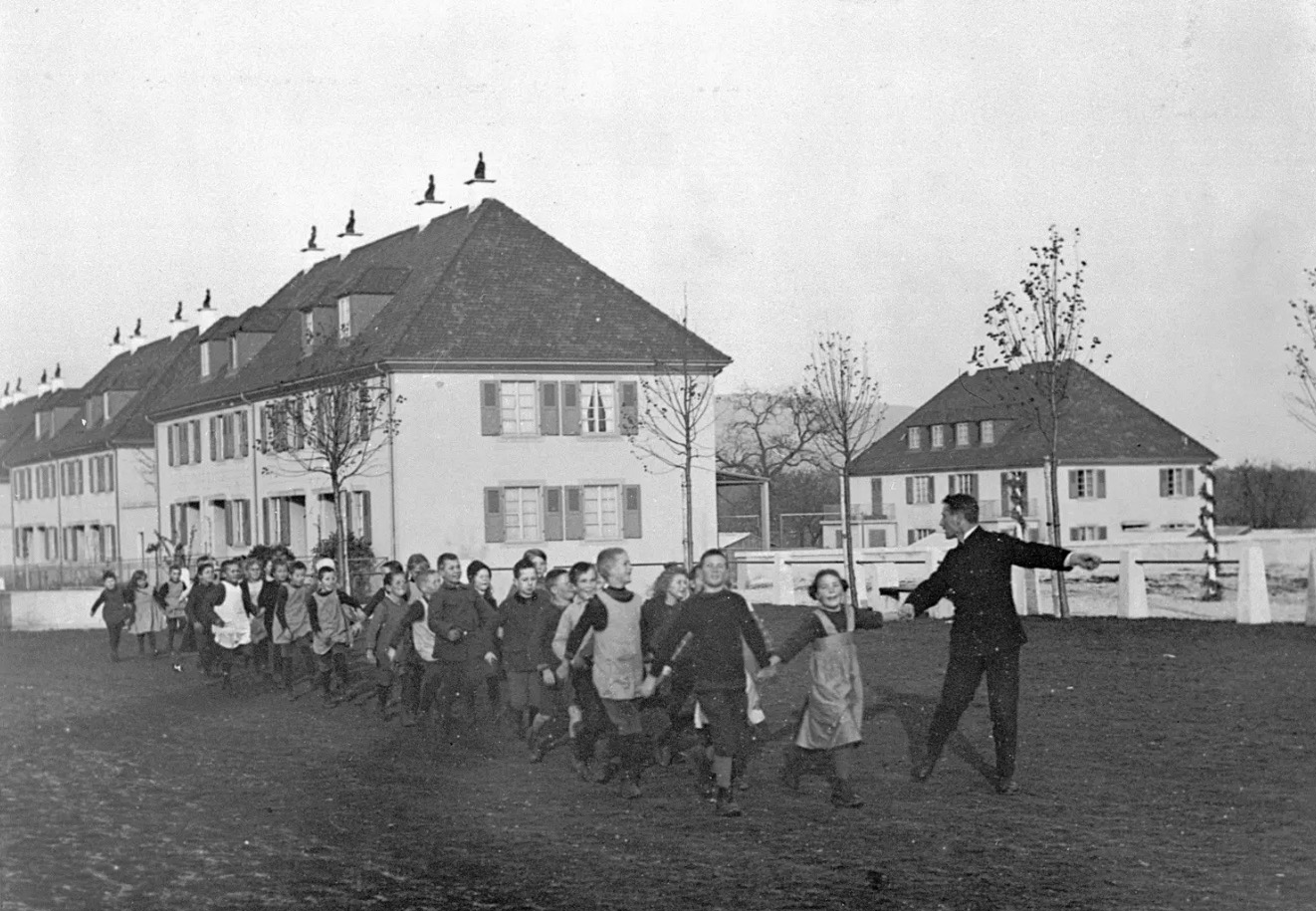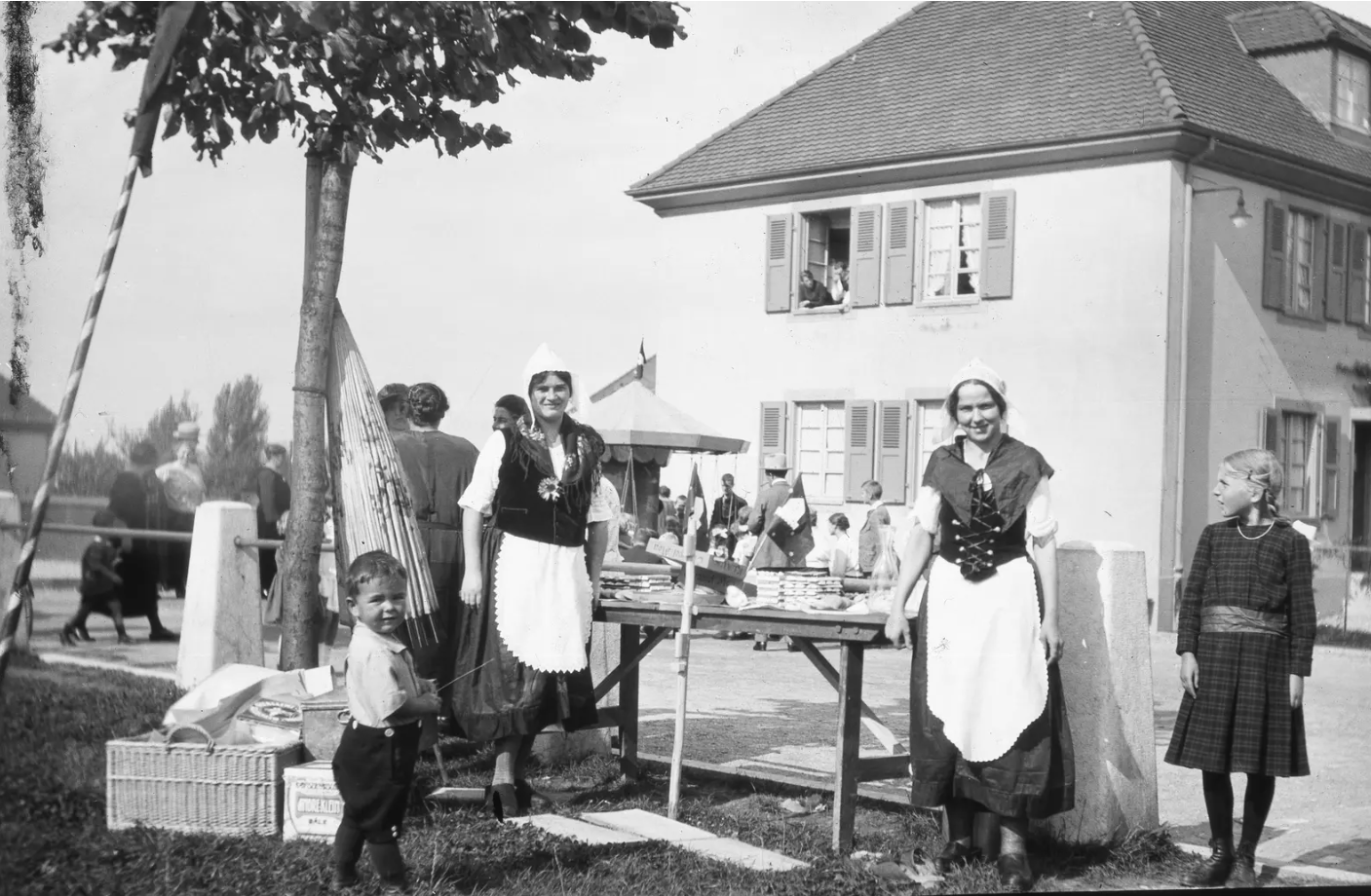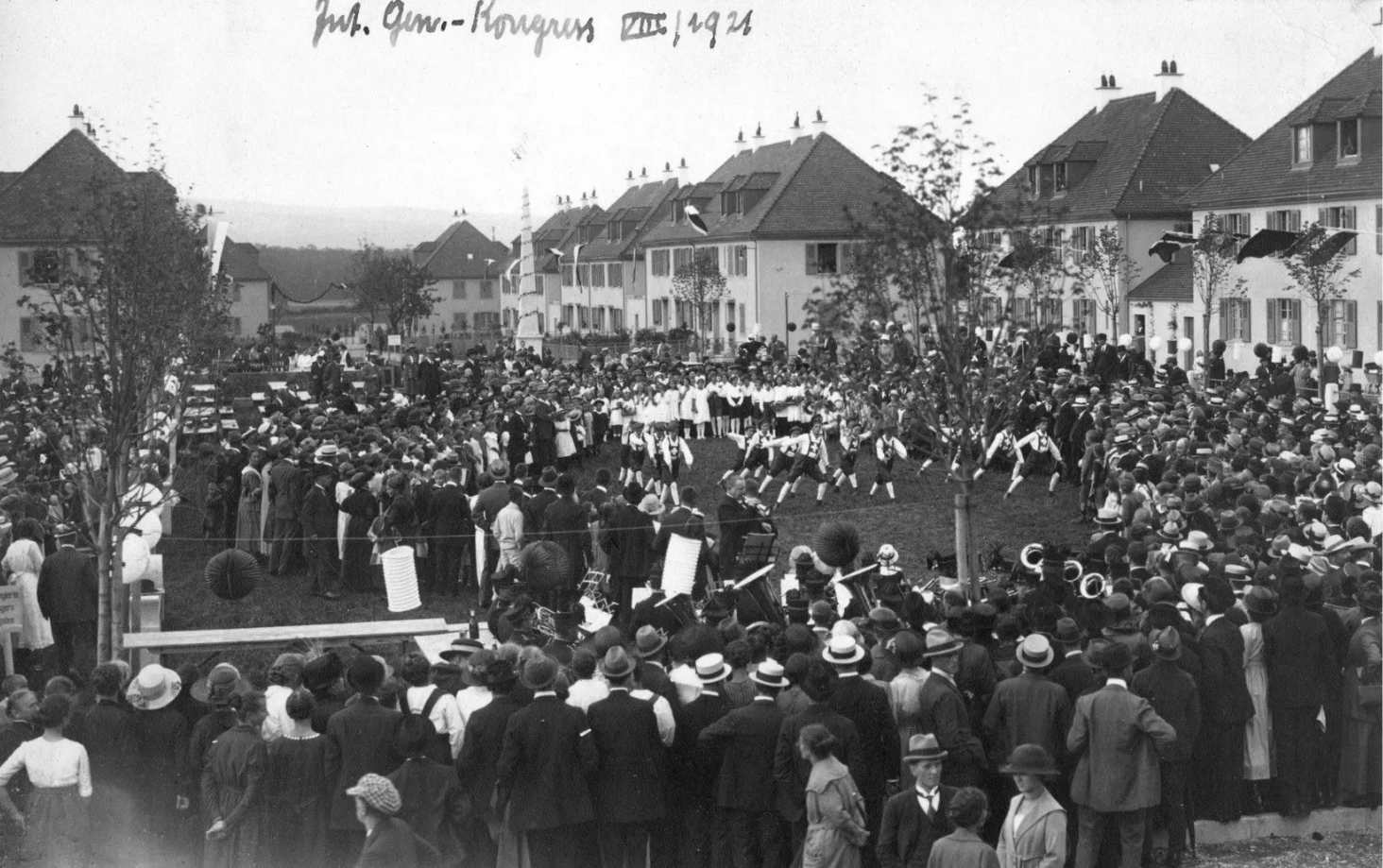
How an experimental housing model pushed communal living to the limits

A hundred years ago the international cooperative movement hailed the creation of the Freidorf in Basel. This so-called Free Village was seen as a testing ground for an ideological third way between socialism and capitalism in aspects of life ranging from work to housing and consumption.
Officially, visitors from two dozen countries made the pilgrimage to the outskirts of Basel in August 1921 for the unveiling of a stone. The Swiss president was there. Addressing the crowd, G.J.D.C Goedhart, the president of the International Cooperative Alliance, declared housing shortages a global problem. For the delegates, he added, the “memory of this day […] gives a new boldness” to the conviction that the cooperative movement was the best way “to improve the lot of humanity”.
That day the locals and their international guests cheered the inauguration of the Freidorf (Free Village) with the unveiling of a memorial stone in the shape of a pyramid. The 150 houses built in a field on the periphery of Basel were intended not only as an architectural ensemble, but also as the foundation for a social remoulding. In the eyes of its founder, the federation of Swiss consumer associations, it represented a whole new model of society.

The 600 residents of the village paid low rents for what were comfortable houses and could plant vegetables and fruits in their garden. But the settlement did not come just as a response to the housing shortage – the idea was also to push communal living beyond a resident’s garden fence.
For the Good of Society
Whoever moved here was allowed to have flaws. The founders never intended the Freidorf to be a gathering of “model people”. That said, the residents were expected to take part in “community tasks, and thereby work on their self-improvement”, as the 1922 annual report put it. Everyone had to get involved in the various commissions, such as the one for managing the local shop. The women in the cooperative were assigned traditional roles caring for the elderly and infirm.
Children attended the Freidorf school, run according to the educational reform principles of the 19th-century Swiss pedagogue Johann Heinrich Pestalozzi. However, the children also took on social control tasks: each week, they went through the settlement collecting contributions for the provident fund. Who would say no to a child? In this respect, the cooperative was a pioneer of sorts, coming decades before the Swiss state got around to introducing blanket pension provisions.

As the first “full cooperative” in Switzerland, the Freidorf covered all aspects of life. Not only was voluntary work and providing care obligatory, but whoever moved to the “free village” had to do all their shopping at the cooperative shop. At the counter, the inhabitants paid with “Freidorf currency”, and when they exchanged Swiss francs for cooperative money, at an exchange rate of one-to-one, it was duly noted in the ledgers.
This way, the cooperative always knew who had bought what and who was entitled to a refund at the end of the year. Similarly the cooperative monitored anyone who bought suspiciously little. “Some families believed they were ‘better off’ getting their meat supply from the so-called rural butchers in the vicinity”, the 1924 annual report remarked. The same was true for clothes and shoes. If such behaviours were tolerated, it would become a habit, which was why a “close eye” had to be kept on this aspect of the cooperative members’ “duty performances”.
Whoever was vegetarian had to convince the commission of their lifestyle. It was impossible to leave this fact undisclosed as shopping was everyone’s business. But life in the Free Village, at least in the beginning, was worth it: from 1921 to 1924, every family received on average CHF200 from the profits of the Freidorf shop each year, the equivalent of nearly a quarter of the yearly rent (CHF850) for a four-room house.

“Everything that’s done to boost the cooperative is of benefit to you,” reminded the Freidorf’s weekly publication, the Wochenblatt, in those first years. That was why all cooperative members had a duty to buy at the cooperative shop and whip up “propaganda amongst friends and acquaintances”. The rewards for their efforts were “immediate material advantages” as well as “that inner gratification that comes with an obligation fulfilled”.
Between capitalism and socialism
The men of the village worked for a firm belonging to the cooperative movement, occupying positions ranging from company managers to factory workers. Class divides were not supposed to be an issue – the cooperative movement saw itself ideologically as a third way between capitalism and socialism.
Staunch cooperative supporters may have sneered at idle ownership and wealth, but as much as they despised inherited opulence, they never questioned property. Nor did they support the class struggle. Bosses and workers simply pulled together for what promised to be a better life for everyone.
Nonetheless, in 1921 a group of visitors from Zurich took the project to be “communism in its purest sense”. The Swiss communists, on the other hand, were appalled, their newspaper Vorwärts (Forwards) labelling the Free Village a “guinea-pig colony” in which “subservience can be sustained”.
A few years later, the project’s architect, Hannes Meyer, wrote that “the bourgeoisie” considered the Freidorf to be a communist “hotbed” which at the same time, however, was “not red enough for the Soviet star”. Meyer, himself later a Communist Party member, went to head up the famous German design school Bauhaus Academy in 1928 before emigrating to Moscow in 1930. Looking back, Meyer himself saw the Freidorf critically as “petty bourgeois” – lower middle-class.
The liberal Swiss president Edmund Schulthess, who made a spontaneous speech while at the opening ceremony, was enthralled by the “true cooperative spirit” he’d experienced that day in August 1921. He thanked the cooperative members “in the name of the Swiss Confederation” as people whose “purpose was purely to serve their neighbours in the interests of the community”.

Never again would the Freidorf receive such international accolades. The president’s appearance was criticised in the local conservative press: instead of making an effort to tackle the general housing shortage, the government had gifted this “association of the people’s benefactors a tidy sum”, said one paper. “Everyone who wished to live alone” should likewise be entitled to live so cheaply, wrote another. For the Basler Bürger- und Gewerbeblatt, the Free Village was little more than a tax loophole.
Farewell to utopia
While the Swiss cooperative movement positioned itself between two political camps, economically it grew to become a force in its own right. Between 1912 and 1922 the revenues from its commercial activities more than doubled, to reach nearly CHF400 million ($418 million). By the end of the First World War, the cooperative was in excellent financial shape. In 1919 Switzerland introduced its first federal tax scheme – the “emergency war tax”. Social housing projects were one way of getting a lower tax rate. So the “free village” was able to reduce the tax burden of the association of cooperative entreprises.
Whether the Freidorf would have been built in the absence of these advantages is unclear. The inscription on the memorial stone still reads: “In the years 1919, 1920 and 1921 the Verbands Schweizer Konsumvereine [federation of Swiss consumer associations] established this Freidorf settlement in the turmoil of the times, a home of neighbourly love, peace and freedom.” Today the cooperative members of the Freidorf continue to pay affordable rent. The settlement is considered one of the most important housing schemes of the interwar period.
Community life has adjusted gradually to the tastes of those “who like to live alone”. The Freidorf currency was abolished in the 1940s and the shop closed in the 1960s. The once politicised cooperative enterprises evolved over several decades to become the Coop company, which today controls over a third of the Swiss retail trade.
Translated from German by Thomas Skelton-Robinson/gw

In compliance with the JTI standards
More: SWI swissinfo.ch certified by the Journalism Trust Initiative






























You can find an overview of ongoing debates with our journalists here . Please join us!
If you want to start a conversation about a topic raised in this article or want to report factual errors, email us at english@swissinfo.ch.